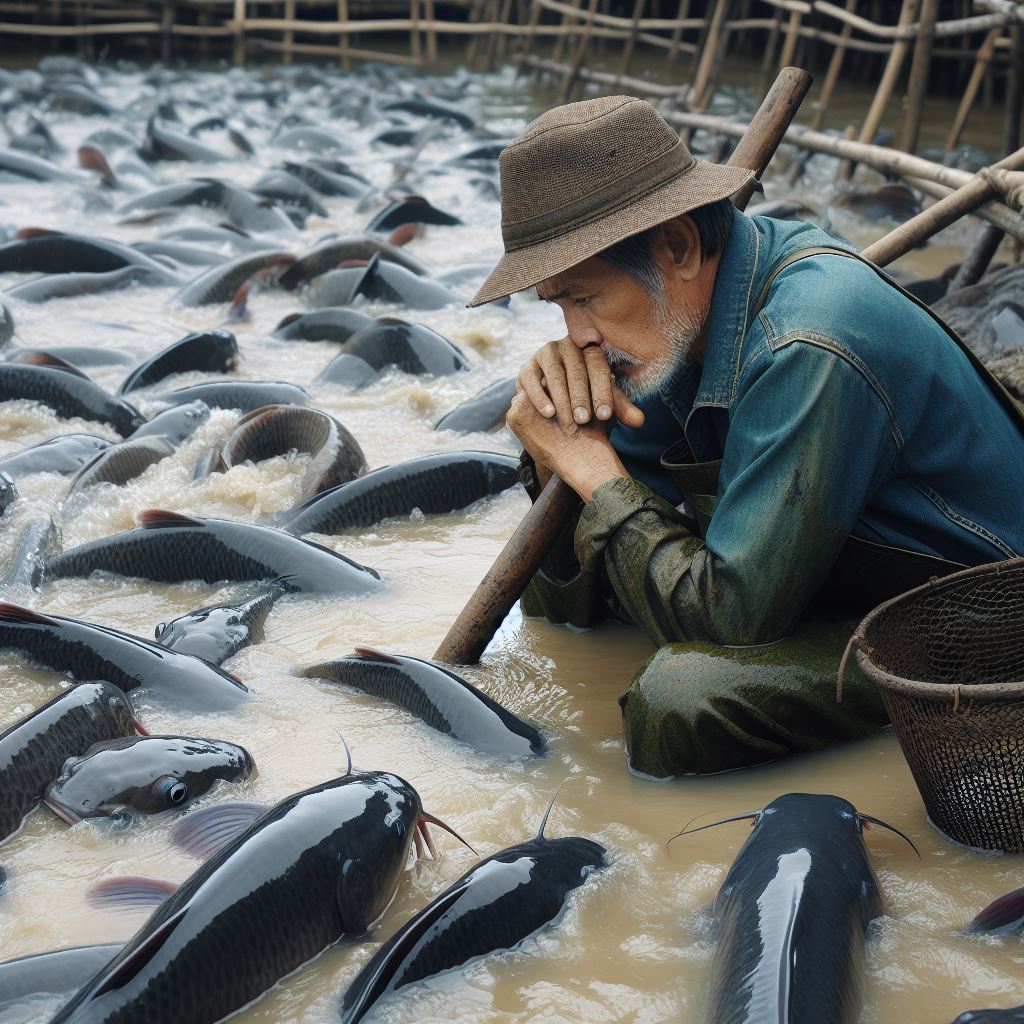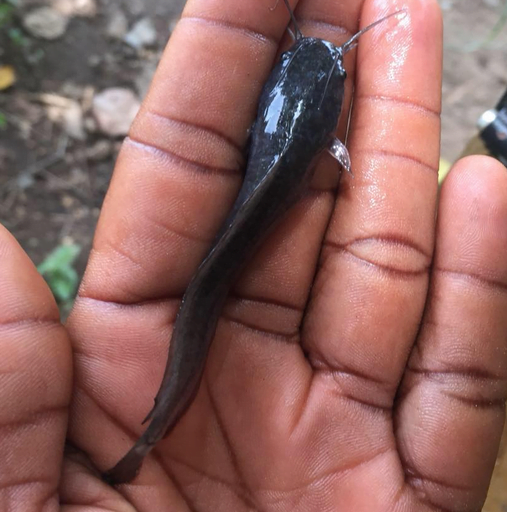Your cart is currently empty!
Top 3 Common Mistakes Catfish Farmers Make
Now, You too can farm online and make good profits! You Invest, We Farm, You Profit!
Win-Win
In this article, we delve into the “Top 3 Common Mistakes Catfish Farmers Make”, to help you make informed decisions, in your catfish farm that would ensure continuous profits.
Catfish farming offers lucrative opportunities for both small-scale and commercial farmers. However, the journey to profitability can be fraught with avoidable errors. This comprehensive analysis aims to provide a critical perspective for those involved in the industry.

Aquaculture, specifically catfish farming, presents a lucrative opportunity for both small-scale and commercial farmers. Yet, the path to profitability is often marred by avoidable errors. This article provides an in-depth analysis of the Top 3 Common Mistakes Catfish Farmers frequently commit, offering a critical perspective for those in the industry.
We will dissect each mistake, starting from common feeding missteps to the overlooked aspects of water management. These errors, while seemingly trivial, can have a profound impact on the farm’s output and, ultimately, its bottom line.
By highlighting these mistakes and providing evidence-based solutions, we aim to equip catfish farmers with the knowledge to enhance their farming practices, leading to healthier catfish and improved yield.
Join us as we explore these prevalent mistakes, providing you with the tools to sidestep these common pitfalls in your catfish farming journey.
Common Mistakes Catfish Farmers Make
- Lack of market research
- Poor water management techniques
- Poor fingerling management
- Poor feeding habits
Lack of Market Research
Catfish farming has rapidly gained traction in Ghana, with numerous online platforms promoting it as a promising business opportunity. This trend has led to a surge of newcomers to the industry, many of whom have unfortunately experienced significant losses.
Often, by the time these individuals seek our expertise, substantial setbacks have already occurred. Despite the potential profitability of catfish farming in Ghana, it is essential, like in any business, to comprehend the market dynamics, including demand and supply.
For instance, aligning the market readiness of your catfish with peak demand periods, such as the festive seasons (particularly December), can provide a competitive edge. Conversely, having your catfish ready for sale during off-peak periods like July or August can be disadvantageous due to low demand and high supply, further compounded by the influx of fish harvested from rivers nationwide.
Competing with local fisherfolk, who incur no feeding costs, may seem daunting, if not impossible.
Moreover, given the variety of fish species available, why should consumers opt for your relatively ‘expensive’ catfish over cheaper alternatives? There is a specific demographic that consumes the type of catfish we produce to table size, and these consumers are located in particular areas. Failing to understand these basic market trends could lead to your downfall as a catfish farmer.
These are just a few of the considerations to keep in mind. There is, undoubtedly, much more to explore in this field.
Poor Water Management Techniques
Catfish farming has gained popularity over tilapia farming due to the perceived ease of growth and resilience of catfish. While it’s true that catfish are often considered more robust than tilapia, many farmers overlook crucial factors, leading to suboptimal water conditions for catfish growth.
Despite their strength and versatility, profitable catfish farming requires strict adherence to water management practices that promote growth. It’s counterproductive to invest in high-quality feeds if the water conditions are not conducive for growth.
Key parameters such as pH, dissolved oxygen, temperature, and ammonia levels must be maintained within optimal ranges to ensure the healthy growth of catfish. Neglecting these factors is one of the common mistakes catfish farmers make, resulting in a poor environment that hinders growth rather than promoting it.
Poor fingerling management
The quality of the fingerlings you introduce into your farm can significantly influence your profit margins. Stocking substandard fingerlings could lead to stunted growth or even high mortality rates.
This is one of the common mistakes new catfish farmers make. If you’ve made this mistake, don’t be too hard on yourself. We’ve all been there, making every conceivable error. That’s why we started this blog – to share our experiences and guide you towards success in catfish farming.
Poor fingerling management isn’t just about procuring low-quality stock. It also involves understanding the behaviour of catfish as they grow.
You might have heard that catfish are cannibalistic? While this is true, the underlying fact is that they are territorial. If their territory is threatened, they will defend it, often to the death.
As you can imagine, your pond doesn’t provide enough territories for each catfish to claim, leading to intense competition, cannibalism, and ultimately, losses for the farmer.
Despite how grim this might sound, there are solutions. One commonly suggested method is frequent sorting; if the fish are all of similar size, the threat is equalized. This strategy can work quite well. Another approach we’ve discovered on our farm is to keep the fingerlings in the hatching areas until they establish a synergy.
Cannibalism is most prevalent during the fingerling stage. However, by the time they mature into juveniles, this behaviour tends to decrease. Combining this natural progression with adequate sorting seems to be an effective strategy. We hope this information is helpful to you. If it is, please leave a comment below!
Poor feeding habits
One of the most prevalent mistakes in catfish farming is poor feeding habits. Feeding is a critical aspect of catfish farming, and improper practices can lead to a range of issues, including stunted growth, disease, and even death.
Overfeeding
Overfeeding is a common mistake made by novice farmers. While it may seem that more food would lead to larger, healthier fish, this is not the case. Overfeeding can lead to wasted feed, which not only increases costs but also pollutes the water, leading to poor water quality and health issues for the fish.
Underfeeding
On the other hand, underfeeding can result in malnutrition, slow growth rates, and increased susceptibility to disease. It’s essential to strike a balance, providing enough feed for healthy growth without overdoing it.
Inconsistent Feeding Times
Catfish, like many animals, thrive on routine. Inconsistent feeding times can stress the fish, leading to poor growth and health. Establishing and sticking to a regular feeding schedule can significantly improve the overall health and productivity of your catfish farm.
Ignoring Feed Quality
The quality of the feed is just as important as the quantity. Low-quality feed can lack the necessary nutrients for optimal growth and health. Investing in high-quality feed can improve growth rates, boost immunity, and increase the overall profitability of your farm.
Catfish farming, while a promising venture, is not without its challenges. As we’ve explored in this article, several common mistakes can hinder the success of both new and experienced farmers. These include poor water management, inadequate understanding of market dynamics, and improper feeding habits.
However, with the right knowledge and strategies, these pitfalls can be avoided. By understanding the importance of quality fingerlings, adhering to optimal water conditions, and implementing proper feeding practices, farmers can significantly improve the productivity and profitability of their catfish farms.
Moreover, understanding the behaviour of catfish and the market trends can help farmers make informed decisions that will positively impact their farming operations.
In the end, success in catfish farming, like any other business, requires dedication, continuous learning, and adaptation to changing circumstances. We hope this article sheds light on the common mistakes in catfish farming and provides valuable insights to help you on your journey to successful catfish farming.
Remember, every mistake is a learning opportunity. Here’s to fewer mistakes and more thriving catfish farms!
Now, You too can farm online and make good profits! You Invest, We Farm, You Profit!
Win-Win
Comments
5 responses to “Top 3 Common Mistakes Catfish Farmers Make”

Very educative.

glad you found it useful Edmund

Thanks for the insight

Thanks,am new here. I believe am at the right place. Thank you for being helpful.

What is ph? How can we check de ph? How do we maintain de required ph?

Leave a Reply